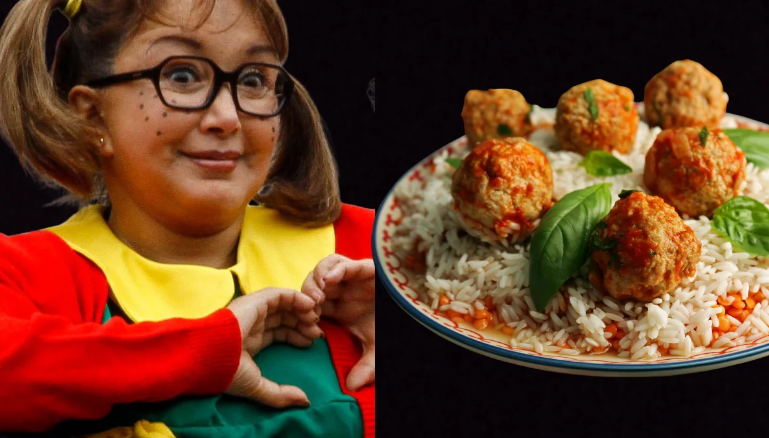The term “chiñindrina” may be unfamiliar to some, but it holds significant cultural and culinary importance, particularly in Latin America. Chiñindrina refers to a popular Mexican street food dish that has gained attention for its unique combination of ingredients and flavors. It’s a versatile snack loved for its rich textures, savory toppings, and satisfying crunch. This article will explore the origins, significance, and various aspects of chiñindrina, delving into its ingredients, preparation methods, and cultural relevance.
Throughout this article, we will dive into the history of chiñindrina, examine its growing popularity, and look at how it is enjoyed in different regions. You’ll also learn about its benefits, variations, and challenges in preparation. By the end, you will have a thorough understanding of chiñindrina, along with practical tips for making or enjoying this flavorful dish.
What Is Chiñindrina?
Chiñindrina is a traditional Mexican snack, commonly sold in street markets and food stalls. It typically consists of fried pork rinds (chicharrón), which are topped with a variety of ingredients such as lettuce, tomato, avocado, sour cream, and salsa. The result is a dish that combines crispy, savory pork rinds with fresh, vibrant toppings, creating a mouthwatering mix of flavors and textures.
Origins of Chiñindrina
The origins of chiñindrina are deeply rooted in Mexican street food culture. While there is no definitive record of its first appearance, it is believed to have originated in urban markets where vendors sought to offer affordable, tasty snacks using readily available ingredients. Over time, chiñindrina became a staple of street food offerings, known for its simplicity and deliciousness.
Ingredients of Chiñindrina
The key ingredient in chiñindrina is chicharrón, a type of fried pork rind. This crispy base is then topped with a variety of fresh and savory components:
- Chicharrón: The foundation of the dish, providing a crunchy texture.
- Lettuce: Adds freshness and a slight crunch.
- Tomato: Provides a juicy, slightly acidic balance to the richness of the chicharrón.
- Avocado: A creamy element that enhances the overall texture and flavor.
- Sour Cream: Adds tanginess and a smooth contrast to the crispy chicharrón.
- Salsa: Typically a spicy salsa is used to bring heat and flavor.
- Cheese: Optional, but some variations include grated cheese for added richness.
These ingredients can vary depending on the region or personal preference, allowing for customization.
Cultural Importance of Chiñindrina
Chiñindrina is more than just a snack; it represents an important aspect of Mexican street food culture. Street food in Mexico is a vital part of daily life, offering convenient, affordable, and flavorful meals to people on the go. Chiñindrina, like many other street foods, reflects the ingenuity of Mexican vendors who create tasty dishes using simple ingredients.
Chiñindrina in Mexican Street Food Culture
Street food in Mexico is an integral part of social and economic life. Vendors set up stalls in busy markets, outside schools, and on street corners, providing easy access to meals that are both affordable and packed with flavor. Chiñindrina has carved out its place in this vibrant scene, particularly in cities like Guadalajara, where it is a common offering.
Regional Variations of Chiñindrina
While the basic components of chiñindrina remain consistent, regional variations exist across Mexico. In some regions, the toppings may include beans or pickled vegetables. Other areas might offer different types of salsa or substitute pork rinds with alternative crunchy bases such as tortilla chips. This regional diversity showcases the adaptability of the dish to local tastes and available ingredients.
The Benefits of Eating Chiñindrina
Chiñindrina offers more than just great flavor. It provides a combination of protein, healthy fats, and fresh vegetables, making it a relatively balanced snack option when compared to other street food items.
Nutritional Benefits of Chiñindrina
- Protein: The pork rinds in chiñindrina are high in protein, which helps in muscle repair and growth.
- Healthy Fats: Avocado provides beneficial fats that are good for heart health.
- Vitamins and Minerals: The vegetables like lettuce and tomato are rich in vitamins A and C, supporting the immune system and skin health.
Chiñindrina as a Satisfying Snack
Thanks to its mix of protein, fat, and fresh produce, chiñindrina offers a satiating snack that keeps hunger at bay. It’s also highly customizable, allowing people to add or omit ingredients based on dietary needs or preferences.
Applications and Uses of Chiñindrina
Chiñindrina can be enjoyed in various settings. While it is primarily street food, its versatility means it can also be served at parties or casual gatherings. Some people even enjoy chiñindrina as a light lunch or dinner, pairing it with a refreshing beverage.
Chiñindrina as Street Food
In bustling Mexican cities, chiñindrina vendors are a common sight. Their stalls attract locals and tourists alike, eager to enjoy this affordable and satisfying dish. Street vendors have mastered the art of preparing chiñindrina quickly, making it an ideal grab-and-go snack.
Chiñindrina at Home
While most people enjoy chiñindrina from a vendor, it can also be made at home. The ingredients are easy to find in grocery stores, and the preparation process is straightforward. Many families enjoy making homemade chiñindrina as a weekend snack or for special occasions.
Challenges and Misconceptions Around Chiñindrina
Like any dish, chiñindrina has its challenges and misconceptions. Some people believe that the dish is unhealthy due to the use of fried pork rinds. Others may assume that it’s difficult to make at home. However, these concerns can be addressed with proper preparation and ingredient choices.
Is Chiñindrina Unhealthy?
While pork rinds are fried, they are low in carbohydrates and high in protein, making them a better choice than other fried snacks like potato chips. Additionally, by adding fresh vegetables and avocado, the dish becomes more balanced in terms of nutrition. For those concerned about fat content, the portion size can be easily controlled.
Difficulty in Making Chiñindrina at Home
Some people hesitate to make chiñindrina at home, thinking it’s complicated or time-consuming. In reality, it’s a simple dish that requires minimal cooking. The most effort comes from preparing the toppings, and even that can be done in advance. Pre-made pork rinds can be purchased at most grocery stores, saving even more time.
How to Make Chiñindrina at Home: A Step-by-Step Guide
For those wanting to try their hand at making chiñindrina, here’s a simple recipe that captures the essence of this delicious dish.
Ingredients
- 1 bag of pork rinds (chicharrón)
- 1 head of lettuce, shredded
- 2 tomatoes, chopped
- 1 avocado, sliced
- 1 cup sour cream
- Salsa (your choice of heat level)
- Grated cheese (optional)
Instructions
- Prepare the Pork Rinds: Lay out the pork rinds on a large plate or serving tray.
- Top with Vegetables: Evenly distribute the shredded lettuce, chopped tomatoes, and sliced avocado over the pork rinds.
- Add Sour Cream: Drizzle sour cream across the dish.
- Add Salsa: Spoon your preferred salsa over the top.
- Optional Cheese: If desired, sprinkle grated cheese over the dish.
- Serve Immediately: Chiñindrina is best enjoyed right after preparation when the pork rinds are still crispy.
Conclusion
Chiñindrina is a beloved Mexican street food that offers a delightful blend of crispy, fresh, and savory flavors. Its simple ingredients, ease of preparation, and adaptability make it a favorite snack for many. Whether enjoyed on the streets of Mexico or made at home, chiñindrina brings together traditional ingredients in a way that satisfies cravings while offering a unique culinary experience. For more info visit Techno Buzz.
FAQs
- What does chiñindrina mean?
Chiñindrina refers to a popular Mexican snack made from pork rinds topped with fresh vegetables and other ingredients.
- Can chiñindrina be made vegetarian?
Yes, the pork rinds can be substituted with tortilla chips or a plant-based crunchy option to make a vegetarian version.
- Is chiñindrina gluten-free?
The traditional recipe using pork rinds is gluten-free, but it’s essential to check the ingredients of store-bought products for any additives that may contain gluten.
- How long does it take to make chiñindrina at home?
Chiñindrina can be prepared in about 10 minutes, especially if the toppings are prepped in advance.
- Where can I buy chiñindrina?
Chiñindrina is commonly found at street food stalls in Mexico, particularly in urban areas. However, the ingredients can be purchased at most grocery stores for homemade preparation.

